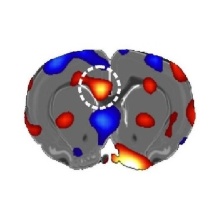Main topic of research:
Learning and decision making
The topic of my research unit refers to the detailed understanding of brain operations that account for complex behaviour with focus on functions of the basal ganglia. The basal ganglia comprise several interconnected nuclei located in the forebrain. They interact with multiple regions of the cerebral cortex and play a major role in diverse functions ranging from movement control to cognition and motivation. The main purpose of our work is to delineate neuronal and neurochemical mechanisms of basal ganglia circuits and their role in goal-directed behavior using rodent models. In particular, we are interested in the involvement of basal ganglia and prefrontal cortex in learning and decision making. Furthermore, we analyze basal ganglia dysfunctions in rodent models of neurological and neuropsychiatric brain disorders. A number of neuroanatomical, neuropharmacological, neurochemical, optogentic and behavioural methods are established to answer these questions.

Wolfgang Hauber
apl. Prof. Dr.Head of Research Unit



